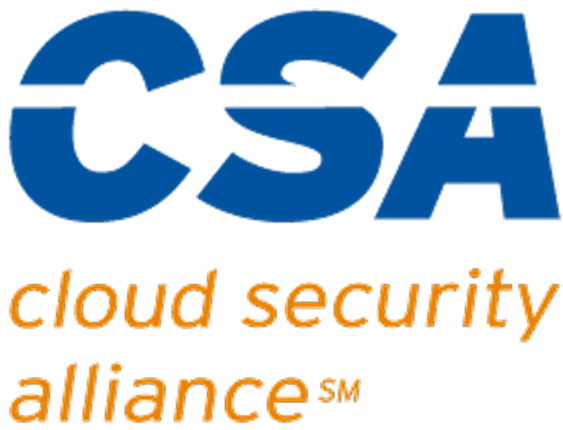Introduction
Who doesn’t want to get things done faster? Windows speed hacks can enhance your user experience by streamlining everyday tasks and optimizing your settings. This guide will teach you the basics of using Windows speed hacks and some tips and tricks for getting the most out of them. By following these tips and tricks, your can complete tasks more quickly and smooth common operations. Here are a few tips to get started:
Optimize your startup programs
The programs that run automatically when your computer boots are will reside in memory indefinitely and can impact performance. Windows 10 has a built-in feature that can speed up your windows computer by allowing you to disable startup programs that you don’t need. This feature is part of the “Task Manager,” located in the “System Tools” menu. You can access the Task Manager with the search function on your taskbar.
A box containing several tabs will appear when you click on this menu item. Click the tab labeled “Startup.” You will see a list of all the programs that can run when your computer boots, with information on their status (enabled or disabled) and their impact on system performance. Right-click on any programs you don’t want to run at boot time and click “disable” on the menu.
Use keyboard shortcuts
Windows has a built-in keyboard shortcut system that can be very helpful in getting things done quickly. This system includes keys that will perform specific functions in various applications and many standard Windows shortcuts. You can even create your own custom shortcut key combinations to launch frequently used applications. By learning about these shortcuts and using them frequently, users can considerably speed up their work experience on Windows. Here are some common keyboard shortcuts that are useful across the Windows environment:
- Ctrl + C: Copy
- Ctrl + X: Cut
- Ctrl + V: Paste
- Ctrl + Z: Undo last action
- Alt + Tab: Cycle through open programs
- Win + Tab: See all open programs on a per-monitor basis, summon Windows Timeline
- Winkey: Open search
- Win + E: Open File Explorer
- Win + Print Screen: Takes a screenshot and saves it to your Pictures folder
- Win + I: Open Windows Settings
- Ctrl + Shift + Esc: Open Task Manager
- F1: Help
- F5: Refresh the active window
- F7: Spell & grammar check (application-specific)
- F11: Toggle full-screen mode
To create your own custom keyboard shortcut for launching a program, locate and right-click the program file, then select “create shortcut.” Now right-click the shortcut you just created and select “Properties.” In the dialog box that appears, select the Shortcut tab, click the Shortcut Key field, and enter the alphanumerical key you wish to associate with the program. Click OK to save the change. When you press Ctrl + Alt + that key, Windows will run the program.
Pin programs to the taskbar
Pinning programs to the taskbar provides quick access to frequently-used programs. If you want to pin a program to the Windows taskbar, there are a few different ways to do it. The easiest way is to right-click on the program and select “Pin to Taskbar.” You can also use the Windows shortcut keys ( Ctrl + Shift + P ). If you want to unpin a program from the taskbar, right-click on it and select “Unpin from Taskbar. To change the location of a pinned program, mouse over its icon on the taskbar, click and hold the left mouse button, then drag it left or right. Release the button to place the program icon where you want it.
Run taskbar programs with keyboard shortcuts
Want to launch a program from your taskbar without taking your hands off your keyboard? You can do it. Just hold down the Windows key, then press the number key that corresponds to the position of that program on your taskbar, counting from the left. I.e, if the third item is Microsoft word, press Win + 3 to launch Word. One limitation of this method is that you cannot launch anything at position ten or higher. To launch one of those programs, hold the Win key and press “T” repeatedly – you’ll see a box appear around each icon on the taskbar, starting from the left. When the box highlights the icon you want, press Enter to launch that program.
Create desktop shortcuts
If you’re like most people, you use your computer for various tasks. Maybe you work on a spreadsheet in Microsoft Excel, or you use Mozilla Firefox to search the web. Some people like having shortcuts for commonly used programs or files on their desktop, so they can launch an application or open a file by double-clicking its shortcut. You may already have shortcuts on your desktop to launch some programs. But what if you want to add a new shortcut for an application or file?
There are a few different ways to create desktop shortcuts for programs and files in Windows. One way is to use the File Explorer. In File Explorer, navigate to the file or program that you want. Next, right-click on the program or file and select “Create Shortcut” from the contextual menu. When you see the shortcut appear, drag it to your desktop.
If you are unsure of the location of the program you want to make a shortcut of, Open the Start menu and scroll through the list of programs to find the one you want. Right-click on the program’s icon and choose More > Open File Location. An Explorer window will appear, open to the program’s folder, and highlighting the program. Now create a shortcut as previously detailed above.
Use Jump Lists
If you frequently use an application’s Recent Files menu item to access your frequently used files, you may appreciate Jump Lists. A Jump List is a list of recently opened files that you can quickly select directly from your taskbar. Right-click a taskbar icon, and you’ll see a list of your most recently opened files or useful shortcuts for the particular program. It saves time if you’ve got to plunge right back into a project. If you know you will return to a specific file or shortcut frequently, you can pin it to the top of the jump list by mousing over its entry and clicking the pin icon that appears at the very right. Any files you do that for will appear under a new Pinned items section at the top of the jump list. Click the pin icon for an entry again to remove it from the pinned items list.
Use the search bar
The Windows search bar can be a powerful tool for finding files and programs quickly. By default, the search bar is located a the lower left of your taskbar, along the bottom of your screen. To use it, start typing the name of the program or file you need into the search box. Windows will display a list of matching results as you type. The search bar prioritizes the apps and files you use most frequently and files and apps located in previous searches. When you see the item you want, click on it to open it or run it.
Use window snapping
Windows 10 has a new feature that allows users to snap windows side-by-side instead of one behind the other. This is great for multitasking, as it will enable you to keep several open windows onscreen simultaneously. The downside is that this feature can be finicky, and it may not work correctly every time.
To snap a window using your mouse, select the title bar of a window on your screen and drag it to the side of your screen to snap it to the edge. Keep dragging until an outline displaying where the window will snap appears, then release the title bar to snap the window into place. Drag the window to the left or right side of the screen, based on where you want it to snap.
To snap a window with the keyboard, select the window you wish to snap with your mouse or by Alt + Tab, then press Win + [Left Arrow] or Win + [Right Arrow] to snap the window to either side of the monitor. You can also use these keys to move the window after an inadvertent snap.
Minimizing several windows at once
If you have multiple windows open on your computer, it can be hard to track which one you’re working in. There are a few quick shortcuts to choose from to minimize multiple windows at once. Using your mouse, click and hold the title bar of the computer program you are working on, then give it a shake. All other open windows will be minimized to the taskbar. If you prefer to use your keyboard, Win + Home will accomplish the same thing. If you want to minimize everything and show only your desktop, press Win + D on the keyboard or click the thin vertical line at the rightmost end of the taskbar.
Mute Windows notifications
Do you hate when your computer beeps or flashes to let you know there’s a new email, message, or notification? You’re not alone. Many people find these notifications irritating and prefer to have their computer completely silent. To disable Windows notifications, open the Start menu, click the Settings cog icon, and head to System > Notifications and actions. You can selectively disable individual types of notifications from appearing on your screen or turn off all notifications to completely silence them.
Use multiple monitors
Multiple monitors have become more and more popular in recent years, as they are a great way to improve productivity. By having multiple monitors available, you can have multiple windows open simultaneously and easily switch between them, making it easier to get work done. Additionally, by looking at different parts of a document or screen on different monitors, you can make sure that you are seeing all of the relevant information. Both Windows and macOS can support multiple monitors. If you have the required desktop real estate, consider this option, as power users highly favor it.
Conclusion
In conclusion, using the tips and tricks discussed in this article can help you use Windows more efficiently and effectively. By taking advantage of these tips, you can speed up your workflow and get more done in less time. So, try out some of these hacks today and see how they can help you to work smarter, not harder. Happy computing!




